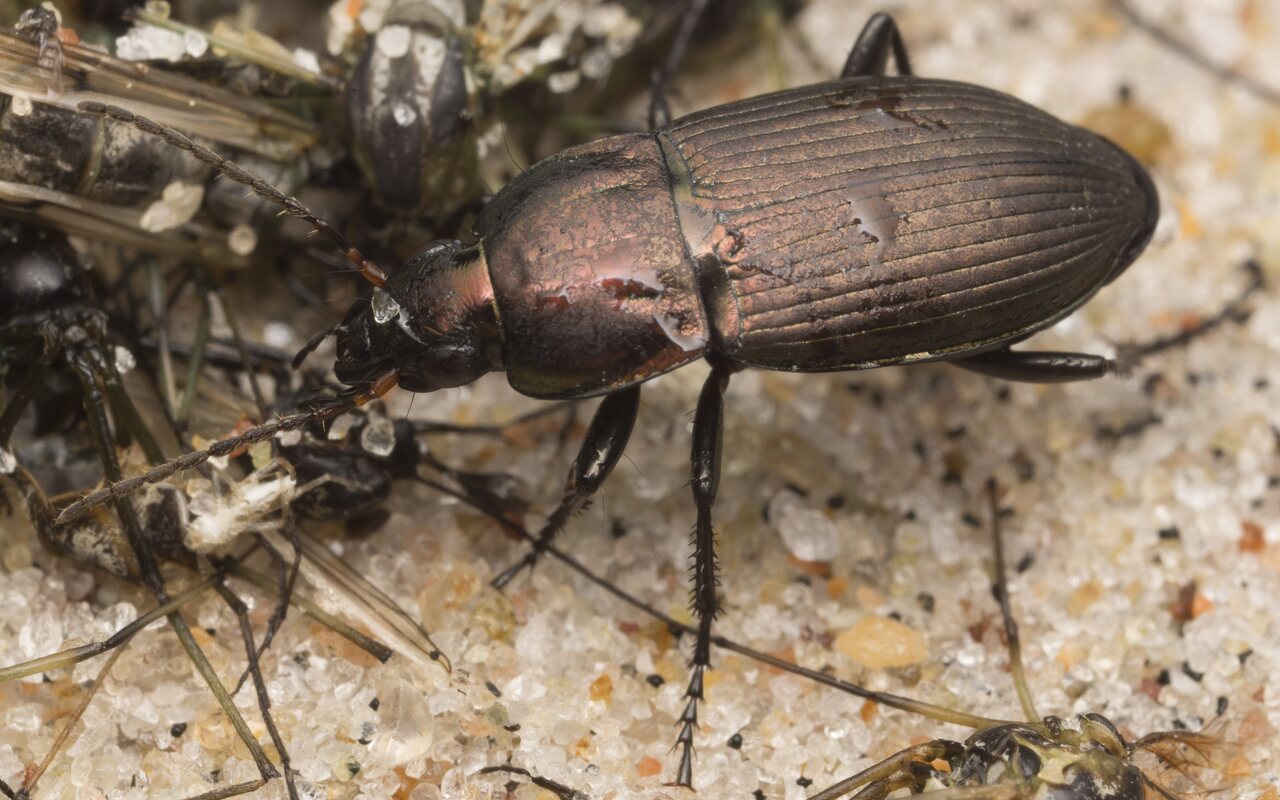
Poecilus versicolor · įvairiaspalvis smiltžygis
ukbeetles.co.uk/poecilus-versicolor
A generally common species throughout the Palaearctic region from Europe and the Caucasus to the Pacific coast of Russia and Japan; it occurs throughout Europe except for the warmer Mediterranean regions and extends north to the UK and the Arctic Circle in Fennoscandia, and is one of the few beetles to occur in Greenland. In Europe it is generally common and often abundant in most of the central countries, especially in upland and mountain areas (to more than 2000 m), and otherwise locally common throughout.
A mesophilic and hygrophilic species typical of grassland, arable land, heaths, moors and open woodland, often on heavy and damp soils but preferring sandy or peaty soils over poorly-draining clay, but also typical of coastal dunes and damp upland moors and bogs. Adults are present throughout the year; they overwinter in the soil, among litter or under debris and are active from March until October, peaking in abundance during May and June. Reproduction occurs in the spring after the adults have overwintered and females produce eggs from May until July, egg production then stops but feeding increases in order to build up fat reserves for a second winter. Eggs are deposited in the soil and larvae emerge after about three weeks, they spend most of their time in the soil where they predate eggs and larvae of other insects, they pass through three instars within two months or so and pupate in an underground cell, the entire cycle from egg to adult taking a little more than three months. Adults are diurnal and generally active on the surface in warm weather although they remain under debris during mild spells, and they are fully winged but rarely recorded in flight.
10.5-12.5 mm. Body broad and glabrous and bright metallic golden-green to coppery or blue, sometimes with a mottled appearance although black specimens sometimes occur, antennae black with two basal segments pale brown, legs black. Head sparsely and very finely punctured and with two setiferous punctures beside large and convex eyes. Antennae slender with all segments elongate, the first three with a fine dorsal ridge. Pronotum transverse, widest behind the middle and narrowed to very finely denticulate posterior angles and almost rounded anterior angles, surface sparsely and very finely punctured, each side with two laterobasal fovea; the inner longer and slightly oblique, the outer short situated on the inner explanate margin, in most specimens with stronger punctures about the fovea. Elytra elongate, broadest behind the middle and evenly curved laterally, basal margin strongly bordered, striae shallowly-impressed and finely punctured, interstices more or less flat, epipleura crossed before the apex. Females have more shiny elytra than males. Legs long and slender, front tibiae strongly widened beyond the antennae-cleaning notch, hind tibiae with 5-8 strong black setae along the inner margins, the first of which may be shorter than the others (some of these may be broken, in which case it is better to count the punctures). Basal segments if hind tarsi deeply furrowed externally. Males may be recognized by their dilated front tarsi.‥